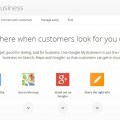In a nutshell: If you take time to learn the specific challenges your customers face, you’ll be able to help them address them head-on. That’s a win-win for everyone.
One of the most significant factors in marketing is learning what challenges your customers are trying to solve with your product or service, and then fine-tuning what you offer to provide a better solution.
These area of consumer problems that need solving are described as “pain points.” In marketing, discovering customer pain points can dramatically improve how marketing messages and outreach strategy are developed.
Understanding pain points and how to address them requires developing expertise in modern marketing techniques and strategies.
What Are Customer Pain Points?
When you strip away all the complexities and jargon that comes with running a business, essentially a sound business model comes down to this:
- What customer pain point has not been solved?
- How will my business solve that pain point better than any other business?
A pain point is another way of saying a “problem.” Whether this problem is real or perceived, no business has yet provided an adequate solution. Discovering and solving pain points is critical whether you are in business-to-consumer marketing (B2C) or business-to-business marketing (B2B).
Wrist watches provide a simple, classic example. People wanted to know what time it was when they were on the go, but obviously they couldn’t carry around clocks (not easily, anyway). Strapping a clock to their wrist addressed that pain point.
Automobiles provide another example. People wanted to move to quiet suburbs with bigger homes, and the mass manufacturing of affordable automobiles allowed that to happen. That’s a pain point solution that has worked for almost a century.
In some cases, a business builds upon another innovation that solved a pain point and created new opportunities. For example, smartphones opened a new business sector as tech companies developed apps for use with mobile devices.
In B2C marketing, pain points often involve improving consumers’ finances or level of productivity. In B2B, pain points typically revolve around streamlining internal processes or providing critical operational support – always with an eye on improving the bottom line.
Study The Industry
To learn about consumer pain points, it’s important to study the industry which you are interested in. This can be accomplished in many ways. Some combination of research in the following areas can give you a good idea of the current pain points trying to be addressed in your niche.
- Read trade publications
- Join trade associations
- Attend conventions and seminars involving your industry
- Follow thought leaders in your industry via social media
Doing all the above will quickly give you a picture of pain points that have been addressed, those companies are currently trying to address, and insight into possible pain points in the near future.
In business, examples of recent pain points include applying technology to solve supply chain management issues or providing data security for IT systems.
Talk to Customers
It might be the digital age, but nothing replaces speaking with people to quickly discover their pain points. The best approach is to simply communicate with customers after a sale, finding out how you can improve your products and services to better address their pain points.
While this can be done via email or other methods of electronic communication, nothing beats face-to-face conversations. It’s easier to find out what people want when speaking with them in person.
Also, personal meetings are especially important in building trust with current and potential customers. That creates the potential for a high customer lifetime value, which is gold to those in marketing and sales.
Repeat customers have far more value than new customers. For example, according to a study by Monetate of fourth quarter shopping in 2015, returning ecommerce customers spent almost double what new shoppers spent.
Ask Good Questions
When talking to customers, make sure to have the right questions ready. Here is a list, based on suggestions from HubSpot. These questions focus on trying to discover business pain points.
- What is the biggest issue blocking company growth?
- What does your boss obsess about? (If the boss is obsessing, it’s almost definitely a pain point)
- What specific area of work is taking up the majority of your day?
- What issues are repeatedly discussed at meetings?
- What are your biggest complaints? This one might be best, because people will welcome the chance to vent and you will learn a lot about pain points within a company
Understanding the pain points of customers is one of the most valuable pieces of information in marketing. Solving them will not only make them repeat customers, but also open the door to expanding your customer base.






